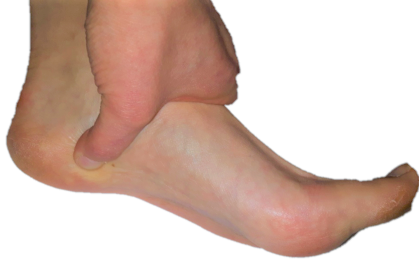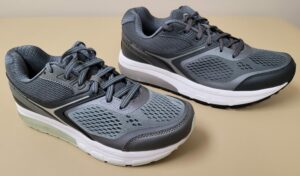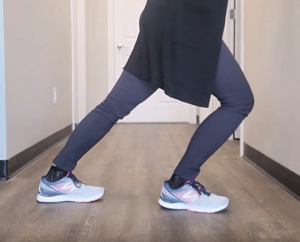
How to prevent plantar fasciitis
Plantar fasciitis is one of the more common diagnoses that I see in the clinic. When plantar fasciitis develops, some people can determine what event led to the pain, while others may never know. The plantar fascia band can be under stress for years without pain, and one day the body isn’t able to heal fast enough to avoid the pain. This could be due to something like age, exercise changes or footwear. Some find their pain is short lived and disappear after a few months, while others can be in pain for years. To prevent plantar fasciitis from developing in the first place, there are a few tips to keep your feet healthy!
 Proper shoes to prevent plantar fasciitis
Proper shoes to prevent plantar fasciitis
Wearing the right shoes for your feet can often be overlooked, but it is one of the more important factors when preventing plantar fasciitis. The right shoes will provide adequate support and shock absorption to prevent stress and strain on the plantar fascia band.
Look for shoes that do not bend easily through the middle of the sole. When trying to bend the shoe in half, it should be solid. The same goes for the back of the heel. When pressing at the back of the heel, there should be a solid piece. The shoes should also have a thick sole for adequate shock absorption. A very thin sole will not provide enough protection to the feet.
Proper support
The proper support for your feet can go a long way in preventing plantar fasciitis, but it’s especially important for those with a collapsed/flat foot or a high arch. Because the plantar fascia is a major part of the arch of the foot, the way the foot is moving can typically be a cause of plantar fasciitis.
A custom foot orthotic or over the counter insert can be important to treat plantar fasciitis, as well as prevent it from developing. Plantar fasciitis can develop from a specific instance, or it can develop over time. In both scenarios, arch support can reduce the strain to the plantar fascia band and prevent plantar fasciitis from developing.
 Stretching to prevent plantar fasciitis
Stretching to prevent plantar fasciitis
Regular stretching can be very beneficial in preventing plantar fasciitis. When muscles are tight, it can change the way your feet are moving and pull different structures. One of the more important muscles to regularly stretch, is the calf muscles. These muscles attach to the heel bone, which can pull on the plantar fascia and lead to extra strain.
Be cautious on vacation
Any change in routine, like a vacation, puts your feet at risk for developing plantar fasciitis. You may be walking or on your feet more often, and wearing unsupported footwear like sandals. When on vacation, make sure you bring at least one pair of comfortable walking shoes. These can be used when on your feet for most of the day.
Sandals will not provide as much support, but make sure they are supportive if wearing them for most of the day. If walking more in sandals, find a pair with built in arch support and enough straps to make sure it’s secure. Wear a sandal with a back strap, and a couple straps around the top of the foot.
If wearing sandals casually, a back strap may not be as important. In this case, make sure there is built in arch support to provide support for the plantar fascia.
Conclusion
Taking care of the feet through proper shoes, support, stretching and being aware of what you are doing can go a long way in preventing plantar fasciitis. Changing up a routine is a time to be especially aware when plantar fasciitis, because this can be a common time to develop plantar fasciitis. Vacation, change in work duties or change in exercise are all examples of times to be extra cautious!
If you need help with your plantar fasciitis, feel free to contact us or book an appointment!

You must be logged in to post a comment.